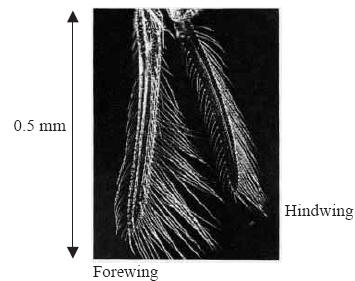|
Effect of Hail on Composite AWE Airframes (not good)
Several AWE starts are betting on their proposed composite airframes
to live outdoors for years in all conditions, but risk of hailstorms will
be a major economic factor. Aircraft hull insurance exists to protect
capital investment in the airframe but rates are much higher to cover hail
risk.
The American Midwest is considered the most hail prone place on earth,
with around ten hailstorms a year not uncommon. Hail is also occurs
regularly around the world at mid-latitudes & tropical higher-altitudes.
Aircraft that live outside are particularly at risk to hail damage.
Hail has the worst effect on composite aircraft skins, with severe damage
hidden under a smooth surface, while a metal wing clearly reveals damage
by denting. Composite damage can allow water infiltration, resulting in
worse damage. Eventual total failure of the airframe is possible. Total
write-off of a damaged aircraft will not be too unusual. Metal wings
dinged by hail are often only cosmetically affected & still meet
airworthiness standards. Composite repair is complex and expensive; the
affected airframe is never again quite as sound or light as the original
condition. Composite airframe damage would commonly not be field
repairable; the aircraft would need to be moved to a repair facility.
Composite AWE designs such as those of Makani Power, Joby Energy, and
Ampyx are the most exposed to hail expense/risk. Of course, membrane wings
are also vulnerable, but safety is less compromised, and repair is
relatively cheap and simple.
Dave Santos
November 3, 2010
Commentary is invited
- Site experiences are invited.
- Wing materials perhaps intended for "membrane"
may include textile, film, laminate sheet, ...
- Collect hail aloft and use its altitude-base
potential energy for driving generator?
- Collect hail aloft and use its melt for splitting
to get hydrogen for use in onboard energy systems?
-
Links:
- Hail
- Membrane wings
-
 Bristled
wing:
Fluid-dynamic characteristics of a bristled wing "Thrips
fly at a chord-based Reynolds number of approximately 10 using bristled
rather than solid wings." Bristled
wing:
Fluid-dynamic characteristics of a bristled wing "Thrips
fly at a chord-based Reynolds number of approximately 10 using bristled
rather than solid wings."
- Feathered wings
- Textile wings
- Film wings
- Future graphane or graphene in wings
- Soft wings
- Hard wings
- Composite aircraft skins
- v
|